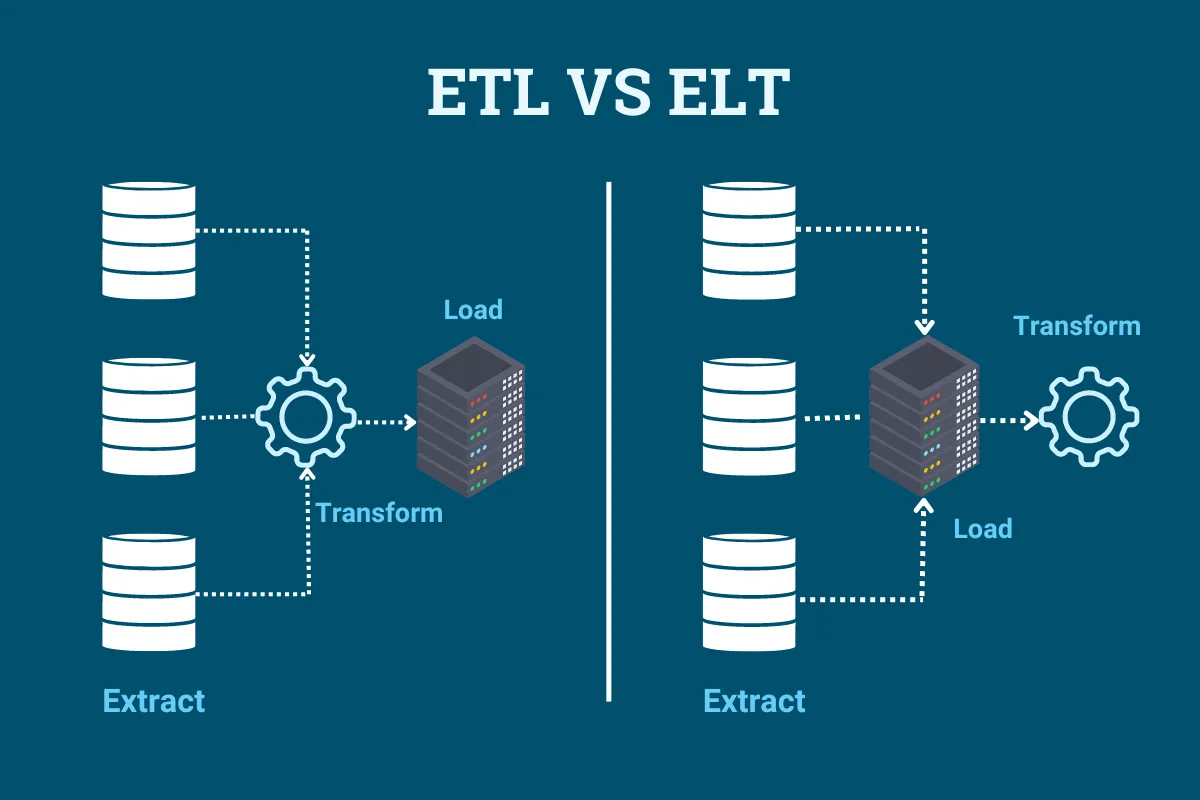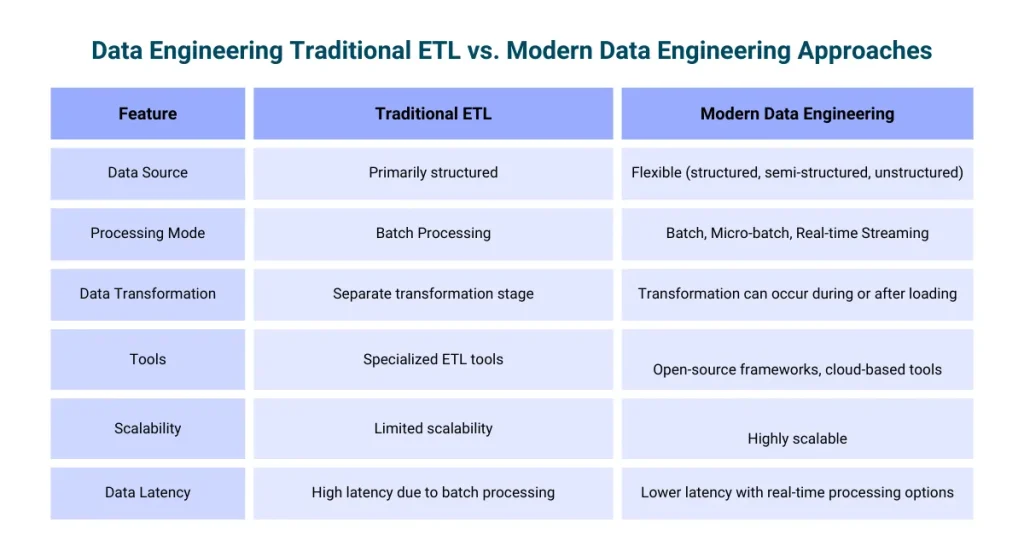- Application Services
- Next-Gen App Development
- Mobile Application Development
- Modernization
-
-
- Integration ServicesGet seamless integration of various 3rd party services or existing systems for smooth operations of your mobile apps
- Cross PlatformsExcellent user experience and functionality of native apps with multi-platform compatibility
- Legacy System Modernization ServicesLegacy system modernization empowers organizations so that they can work more efficiently and intelligently.
-
-
- DevOps
- Software Testing
-
-
- AI Enabled TestingLeverage AI for testing the quality of your software products
- Functional TestingAutomated Functional Testing for improved quality & faster go-to-market
- STQC CertificationQuality, Excellence, and Innovation – The Hallmarks of Suma Soft
- Performance TestingEliminate performance bottlenecks of business-critical apps to run under expected, peak loads
-
- Scriptless Automation SolutionsFast, reliable, and easy testing with our “Ready-to-Deploy” automation framework
- Devops TestingOptimize testing in CI/CD pipelines for greater agility, efficiency, and quality
- AA CertificationEmpaneled Certifier for Account Aggregator (AA) Ecosystem
- ABDM Ecosystem Sandbox Exit ProcessWe Certify Your API for ABDM Sandbox Integration And Exit Process
-
-
- AI/ML Services
- AI/ML ServicesStay ahead of the curve with our advanced AI/ML capabilities
- Data Engineering ServicesDrive data-driven decision-making with our agile and customizable data engineering solutions
- Software Product Engineering ServicesTransform your concepts into market-leading products with our strategic product engineering approach
- VaniePartner with Us for Innovative Web App Solutions!
- Indiastack
- Account AggregatorGet certified using Daksh DEPA Validator to go live on the AA network.
- Ayushman Bharat Digital Mission (ABDM)Get certified using Daksh DEPA Validator to go live on the ABDM network.
- Beckn Protocol ImplementationImplement Beckn protocol to go live on India Stack network.
- ONDC CertificationGet certified using Daksh DEPA Validator to go live on the ONDC network.
- O Rickshaw Pune’s First ONDC Mobility App
- Business Services
- Business Process Management
-
-
- Healthcare BPO ServicesRound the clock coverage for most critical industry
- Logistics & Supply ChainSmarter supply chains Built for today and ready for tomorrow
- Outsource eCommerce Customer ServicesAttain sustainable business growth through a customized ecommerce management solution
- DATA Entry ServicesEnsure the accuracy and security of your data with Suma Soft
- REIT Management ServicesProductivity for You. Transparency for Your Investor
- Customer ServiceSmart use of technology makes all the difference in CX
- US Auto-loan Underwriting Support ServicesEnhance compliance and minimize risk with Suma Soft’s underwriting support!
-
- Finance and Accounting ManagementImproving Account Payable and Receivables Through Artificial Intelligence
- Credit Risk & ComplianceDefine technology roadmap & implementation strategy
- Claims ManagementState-of-the-art technology to assist in responding to rapidly-evolving claim situations
- Exception Handling Services for OCR ProjectsYou do the Coding, we will handle exceptions for you
- UnderwritingEvolve into digital, data-driven enterprises
- Mortgage ServicesStreamline mortgage processing task, increase CX, and reduce origination & compliance cost
-
-
- Tech Support
-
-
- Desktop SupportResponsive, Day-to-Day Tech Assistance
- Network SupportCreate a comprehensive network security strategy for protecting the enterprise end-to-end
- Active Directory SupportMinimize the risk of disrupting critical business apps while optimizing the performance of MS infrastructure
- Microsoft Exchange SupportStay on top of imminent threats to achieve a glitch-free network with rapid Microsoft Exchange support
-
- L1 & L2 SupportOptimize performance with round-the-clock technical support cater to your business goals
- Remote MonitoringKeep your IT systems running smoothly and ensure the stability and security of your IT environment for the workforce
- NOCGet unrivaled NOC services & scale immediately to enhance your bottom-line profitability with 24*7 services
-
-
- Hyperautomation
-
- Cyber Security
-
-
- AssessmentTest your applications and networks to identify & fix vulnerabilities exposing your sensitive assets
- Cloud SecurityIntelligence and expertise providing a new level of cyber-immunity
- Managed SecurityComprehensive security architecture with flexible enforcement for advanced protection
- Digital ForensicsEmpower your organization to access, manage and leverage Digital Data
-
-
- ServiceNow
- ServiceNow Managed ServicesEnjoy Smooth Servicenow Performance and Gain More Value From Your Servicenow Solution
- ServiceNow Integration ServicesIntegrate ServiceNow seamlessly into your IT ecosystem with our ServiceNow Solutions.
- ServiceNow Implementation ServicesTransform your business operations with expert-led ServiceNow implementation services.
- ServiceNow Migration ServiceUpgrade to ServiceNow effortlessly with our end-to-end migration services and support.
- ServiceNow Consulting ServicesMaximize your ServiceNow investment with our strategic and result-driven consulting services.
- ServiceNow ITBM ImplementationAchieve your ITBM goals with our result-driven and expert-guided ServiceNow implementation services.
- ServiceNow ITSM Implementation ServicesGet efficient and innovative ITSM solutions with our specialized ServiceNow implementation services.
- ServiceNow Chatbot DevelopmentTransform your customer service with our innovative ServiceNow chatbot development services.
- ServiceNow CSM ImplementationTransform customer experiences with ServiceNow CSM – Elevate satisfaction, streamline support, and exceed expectations!
- ServiceNow GRC ImplementationElevate compliance with seamless ServiceNow GRC and Transform risk management.
- ServiceNow Security OperationsDrive security innovation. Optimize protection with ServiceNow SecOps and Elevate your defenses.
- Business Process Management
- Digital
- Cloud
-
-
- Cloud App Development ServicesGet high security, efficient performance, and excellent operations with cloud apps
- Cloud Testing ServicesDelivering highly polished solutions to help you reduce costs and meet deadlines
- Cloud Migration ServicesA secure cloud single sign-on solution that IT, security, and users will surely love
-
- Enterprise Mobility
- CRM
- Microsoft Dynamics 365 ServicesStreamline business processes with superior BI, automation, and key customer insights
- Custom CRM Development ServicesDigitize processes, enhance everyday managerial activities and engage more customers
- Salesforce Consulting ServicesTransform Your Business with Expert Salesforce Guidance – Elevate Performance and Drive Growth!
- E-Learning
- Collaboration
- Dusmile Platform
- Cloud
- Insights
- Industries
- Industry We Serve
- Banking And FinanceAccelerate your journey with fintech innovation to reshape customer experience
- GovernmentFully-managed environment for Government, Built for security and compliance
- E-CommerceBest-of-breed technologies to enhance CX and increase revenue to maximize business needs
- E-LearningReimaging education – from remote to hybrid learning
- Logistics & DistributionChanging the landscape of supply chain management
- AutomotiveRevolutionizing automotive development for the digital future
- HealthcareDelivering better experiences, better insights, and better care for better health
- ManufacturingLeverage our deep expertise to modernize your manufacturing and industrial technologies and processes.
- Industry We Serve
- About Us
- About Suma Soft
- HistoryDecades of experience and expertise matched with dedicated professionals.
- LeadershipA leadership that drives Suma Soft to meet its overall goals.
- CertificationsOur recognition as a trusted technology company for orchestrating a successful business transformation
- Our PartnersBringing together the best technologies and practices to offer a prosperous digital future
- About Suma Soft
- Careers
- Contact Us
Comparing Traditional ETL vs. Modern Data Engineering Approaches
April 24, 2024

Data has become a fundamental part of every organization in today’s fast-paced world. Data is the raw material that powers modern businesses, from customer emails to sensor readings and website clicks to purchase orders. However, the sheer volume of data does not matter; what we do with it is what counts. Extracting insights from information is crucial for every organization. Still, the question is, how can we obtain valuable data from complex sources that can be analyzed and acted upon? This is where data engineering comes in.
Think of data integration as the process of building a bridge. On one side, there are various data sources, such as customer records, financial transactions, website clicks, and more. On the other side, some analysts are looking for insights to optimize marketing campaigns, enhance customer experience, or predict future trends. Data integration helps connect the dots between these sources and enables the data to work harmoniously. Now, there are different ways to integrate data. Traditional ETL and Modern ETL often face off.
Let's break down the difference between ETL and ELT and why you might choose one.
Traditional ETL:
The fundamental difference between ETL and ELT approaches lies in how data is transformed and loaded. ETL is a traditional method that involves Extract, Transform, and Load (ETL).
Here's how it works:
Extract:
Data is collected from multiple sources, such as sales records, website logs, or customer surveys.
Transform:
The data has been processed to remove any errors and inconsistencies and has been formatted to ensure a standard level of quality.
Load:
The processed and refined data is loaded into a centralized data warehouse and ready for analysis.
Organizing and transforming data upfront through ETL or ELT processes ensures reliable data quality, boosts trust in the results, simplifies analysis, and guarantees a consistent schema. The main difference between ETL and ELT lies in the data processing order. While the ETL process has some pros and cons. Let’s take a closer look at them.
Pros:
Tried-and-True Reliability: ETL is a well-established approach with a proven track record. Organizations can be confident in its stability and predictability for data integration tasks.
Structured Data Specialist: ETL excels at handling data from relational databases, a shared data source for many businesses. Its structure aligns well with the ETL process, ensuring efficient data extraction and transformation.
Clear Separation of Concerns: The three-step ETL process (extract, transform, load) provides a clear division of labor. This simplifies development, troubleshooting, and maintenance, especially for data teams familiar with the methodology.
Pros:
Batch Processing Blues: ETL’s reliance on batch processing can be a bottleneck for real-time or near real-time analytics. More data availability is needed to ensure timely insights and decision-making.
Limited Data Source Flexibility: Traditional ETL needs to adapt to a wider variety of data sources and formats beyond relational databases. This can become a challenge in today’s data landscape with diverse data types.
Scalability Struggles: Managing and maintaining large-scale ETL pipelines can be complex. As data volumes grow, ETL may need help to keep pace, requiring significant resources and expertise.
Modern data engineering: Fast, Flexible, and Cloud-Friendly
Things are flipped here.
Here's how it works:
Extract:
Data is extracted from its source and stored in a central repository like a data lake.
Load:
The data lake provides easy access to data for querying and analysis purposes.
Transform:
Data is transformed for a specific analysis or report only when required.
Here's how it differs from the old ETL approach:
Cloud-based platforms:
In modern data engineering, the cloud is often used for cost-effective and scalable solutions. One key difference between ETL and ELT is that with ELT, the data is first loaded into the target system before transformations are applied. In contrast, ETL transforms the data before being loaded into the target system. It’s like having a team of expert librarians who can organize the books before or after they are put on the shelves, depending on the method used.
Real-time insights:
With the help of modern tools, it is now possible to process data in near real-time. This allows you to respond instantly to changes in customer behavior and market dynamics. Just imagine having access to a live feed from a library, which displays the books accessed in real-time. This would provide valuable insights into reader preferences and help you make informed decisions.
The advantages of adopting modern data engineering practices are numerous:
Faster time to insights:
Get answers to your questions quicker, allowing for more agile decision-making.
Improved data quality and consistency:
Ensure your data is accurate and reliable, as this will help you to formulate better-informed strategies.
Reduced costs:
Eliminate costly hardware and infrastructure requirements to make data analytics more accessible.
Enhanced scalability:
You can manage increasing amounts of data and incorporate new data sources into your system without overspending.
The difference between ETL and ELT lies in the upfront transformation of data. While ETL involves transforming data before loading it into a data warehouse, ELT loads the data first and then transforms it. However, ELT may raise concerns regarding data quality if transformation is not done upfront, and complex analyses may require greater processing power within the data lake.
Choosing the Right Approach: It's Not a One-Size-Fits-All
Which approach is right for your organization? It depends on your unique requirements and objectives. If ensuring data quality and consistency is paramount, traditional ETL could be the most suitable option. However, modern data engineering is the game-changer you need to achieve scalability, flexibility, and speed.
Let's analyze the difference between ETL and ELT based on critical parameters for businesses like yours.
1. Cost:
Traditional ETL:
One key difference between ETL and ELT is that with ETL, the transformation process happens before loading data into the target system. On the other hand, with ELT, data is first loaded into the target system, and then transformation is applied. This difference can impact the overall cost of the system, as ETL may require more hardware and maintenance costs upfront due to the need for transformation before loading. At the same time, ELT may face higher scaling costs as the data volume increases due to rigid infrastructure.
Modern data engineering:
Lower initial costs thanks to cloud-based solutions. Scalability is often cheaper and more accessible, enabling pay-as-you-go models.
2. Scalability:
Traditional ETL:
Difficult and time-consuming to scale. Rigid infrastructure can become a bottleneck when data volume surges, hampering performance and agility.
Modern data engineering:
Highly scalable with cloud-based solutions. Handles large data volumes efficiently, effortlessly accommodating data growth without performance impact.
3. Flexibility:
Traditional ETL:
Less adaptable to changing data sources and requirements. Integrating new data streams can be complex and time-consuming.
Modern data engineering:
Highly adaptable and agile. Can easily incorporate new data sources and adjust to changing requirements, future-proofing your data infrastructure.
4. Data Quality:
Traditional ETL:
Data cleansing and transformation happen before loading, prioritizing data quality but affecting performance and potentially slowing down initial processing.
Modern data engineering:
Data accuracy can be ensured through robust data governance and quality checks within the warehouse. After loading, data quality can be improved, allowing for faster initial processing and deeper analysis later. One of the main differences between ETL and ELT is that in ELT, data is first loaded into the warehouse and then transformed. In contrast, in ETL, data is transformed before being loaded into the warehouse.
Here's a breakdown of the key differences:
Modern data engineering approaches take a more holistic view of data management, encompassing data pipelines, data warehousing, data lakes, and data governance. Here’s a breakdown of the key differences:

The choice between Traditional ETL and Modern Data Engineering depends on your specific needs:
- Traditional ETL can be sufficient for smaller, structured data sets and limited future growth.
- Modern Data Engineering offers scalability and flexibility for large data volumes, diverse data formats, and anticipated growth.
Ensure your data is easily accessible by partnering with us to evaluate your needs and develop a tailored data engineering solution. Our team of data engineering experts can assist you in designing, implementing, and managing a cutting-edge data platform that puts you ahead of the competition. We specialize in ETL and ELT processes and can help you select the right approach for your requirements.
Our team of data engineering professionals can help you plan, execute, and manage a modern data platform that keeps you ahead of the competition. Contact us to discuss how we can help you unleash the full potential of your data and drive your business toward success.
Technical Manager – AI/ML Service | Smartchat and Voice Bot development |
Specialize in Fianace | Call centre Automation Project “Vanie – 100% Call Audit Solution
Recent Posts
- Comparing Traditional ETL vs. Modern Data Engineering Approaches April 24, 2024
- Can Outsourcing E-Commerce Customer Service Actually Drive Sales and Brand Loyalty? April 10, 2024
- The Role of Healthcare BPO Companies in Driving Efficiency and Quality Care April 1, 2024
- Streamlining Your Digital Transformation Journey With ServiceNow Implementation March 15, 2024
- Streamlining Workflows With Next-Gen ServiceNow Integration . March 14, 2024
- What Are ServiceNow Managed Services and How Do They Work? March 13, 2024
- How AI & ML Enhances Customer Experiences: Real-world Examples March 12, 2024
- What to Expect During the Software Product Engineering Process March 7, 2024
- When and How to Integrate DevOps in Product Engineering? March 5, 2024
- Exploring the Potential: AI & ML Applications Across Sectors February 28, 2024

